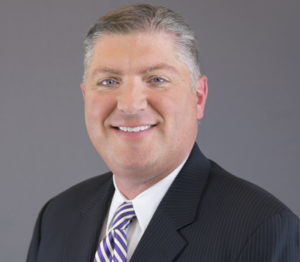
Journalists are going to find their way to your bank someday whether you want them to or not; therefore it is in your best interests to develop a media strategy that plays to your advantage. This was the argument made by Patrick Dix, vice president of public relations for SHAZAM, in a webinar focused on media communications strategies for bankers.
Dix, a former television reporter and news anchor in Des Moines, Iowa, recounted the many times he tried but failed to get bankers to participate in stories throughout his career in journalism. “Most bankers chose to keep their heads down,” motivated by fear, he presumed. “That’s the wrong choice.”
Modern news consumption, driven by digital access and the proliferation of social media, creates an insatiable need for stories, Dix said. Reporters may call a bank to localize a national economic story or to find a local expert to explain a complex financial topic. Comfort talking to members of the press comes with practice, Dix said.
He encouraged bankers to accept such interviews to build currency with the press, because journalists will as easily rush to the bank to cover a crisis, such as a robbery. Bankers who have genial relationships with members of the press will be better positioned to deliver a credible, skilled response on the day a camera-wielding onslaught of press turns up at the bank. “It’s not if but when,” Dix said.
Sixty-point headlines aside, Dix’s advice about generating a relationship with media is simply good public relations practice. Reporters, he said, are always on the hunt for good stories. To illustrate, Dix played a clip of a television news story that showed two New Jersey business owners struggling to overcome a financial hurdle. Two-thirds of the way through the clip, the focus of the story shifted to a banker who stepped up and gave a loan to each business. “You think the story is about the businesses but it’s really a story about a bank,” Dix said. His lesson: When a reporter calls, bankers cannot hesitate to respond because the reporter will hang up and move to the next name on the list.
Dix acknowledged there sometimes emerges a disconnect between a banker’s expectation for a story and the journalistic practice or the published story. “They tell me, ‘I send them my press release and they don’t write my story,’” Dix said. The journalist will protect their independence and be turned off by someone who seeks to craft the narrative, Dix said.
Using a short primer on the journalistic code of ethics — which requires journalists to seek truth and report it; minimize harm; act independently, and be accountable and transparent — Dix encouraged bankers to register any dissatisfaction by pointing to any applicable lapse in that code. If a journalist sticks a camera into the face of a teller who was just robbed at gunpoint and re-traumatizes that teller, Dix said, “they didn’t minimize harm, did they?”
The 24-hour news cycle motivates reporters to seek out bankers as sources. Bankers, Dix said, can capitalize on the need to fill the cycle by being affable to reporters inside and outside the interview. In other words, reporters are people. When asked what a good relationship with a reporter might look like, Dix said, “At first, give, give, give.”
Dix closed the webinar by citing a survey conducted by United Bankers’ Bank, Bloomington, Minn., that revealed the size of a bank did not correlate to its success on social media. “You have to post more frequently,” Dix said. Even a bank that doesn’t have an official social media presence has a social media presence. People are talking about your bank, he said. “You need to take control,” Dix said.
People increasingly get their news and information from social media, Dix said. Consequently, a bank’s social media strategy is more important than ever. Dix encouraged bankers to identify their social media champions, or curators, and nurture relationships with them; these are the people who forward a bank’s social media posts.
Media relations is not a task reserved solely for the CEO of the bank, Dix proffered. “The whole organization should see the opportunities and take advantage of them to expand your brand.”
Dix’s February 15 webinar was hosted by BankBeatGroups, a service that connects mid-career bankers to education and other networking and career development resources. You can view it in its entirety here.
